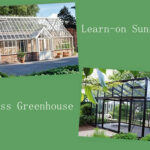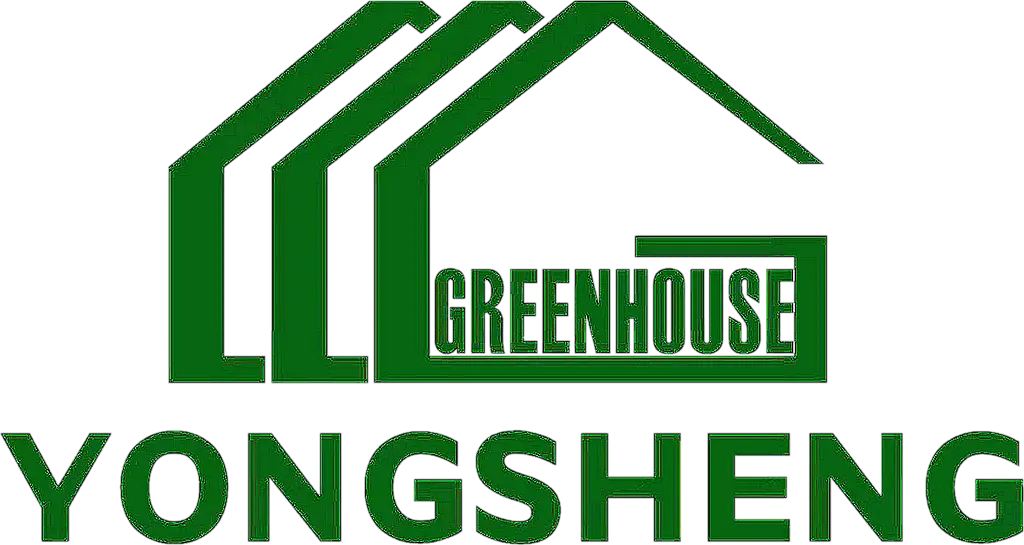
Sustainable development leads to a new trend in the design of garden greenhouses
The use of eco-friendly materials and energy-efficient glass is revolutionizing the design and functionality of garden greenhouses, Victorian greenhouses, and glass greenhouses. Greenhouse glass with Low-E coatings or double-glazing enhances insulation, reducing heat loss and energy consumption while maintaining optimal light transmission for plant growth. These sustainable materials not only minimize environmental impact but also improve the durability and efficiency of greenhouses. Whether in a classic Victorian greenhouse with ornate details or a modern garden greenhouse, the integration of eco-conscious elements ensures a harmonious blend of aesthetics, functionality, and environmental responsibility, making greenhouses a greener choice for gardeners.

In recent years, the growing emphasis on sustainability has significantly influenced the design and construction of garden greenhouses. From the classic elegance of Victorian greenhouses to the modern functionality of glass greenhouses, the integration of eco-friendly materials and energy-efficient glass is revolutionizing the way we approach horticulture. This shift not only aligns with global efforts to reduce environmental impact but also enhances the efficiency, durability, and aesthetic appeal of greenhouses. As a result, sustainable design has become a defining trend in the world of garden greenhouses, offering gardeners innovative solutions that harmonize nature, technology, and environmental responsibility.
The Role of Eco-Friendly Materials in Greenhouse Design
The use of eco-friendly materials is at the forefront of sustainable greenhouse design. Traditional materials such as untreated wood or non-recyclable plastics are being replaced by sustainable alternatives that minimize environmental impact without compromising quality or functionality. For example, aluminum frames with a wood-like appearance are gaining popularity in garden greenhouses due to their durability, low maintenance, and recyclability. Similarly, recycled steel and composite materials are being used to construct sturdy yet environmentally conscious greenhouse structures.
In Victorian greenhouses, which are known for their ornate designs and intricate details, sustainable materials are being incorporated to preserve their timeless beauty while reducing their carbon footprint. For instance, reclaimed wood or responsibly sourced timber can be used for decorative elements, ensuring that these greenhouses remain both elegant and eco-friendly.
Energy-Efficient Glass: A Game-Changer for Greenhouses
One of the most significant advancements in sustainable greenhouse design is the use of energy-efficient glass. Traditional greenhouse glass, while effective in allowing sunlight to penetrate, often lacks insulation properties, leading to heat loss and increased energy consumption. Modern solutions, such as Low-E (low emissivity) glass and double-glazed panels, address these issues by improving thermal efficiency and reducing energy usage.
Low-E glass is coated with a thin, transparent layer that reflects infrared light, helping to retain heat inside the greenhouse during colder months while preventing excessive heat buildup in the summer. This not only creates a stable microclimate for plants but also reduces the need for additional heating or cooling systems, making glass greenhouses more energy-efficient and cost-effective.
Double-glazed glass, on the other hand, consists of two layers of glass with an insulating gap in between. This design significantly enhances insulation, further minimizing heat loss and improving energy efficiency. These innovations are particularly beneficial for garden greenhouses in regions with extreme weather conditions, as they ensure optimal growing conditions year-round while lowering energy costs.
Benefits of Sustainable Garden Greenhouses
- Reduced Environmental Impact
By using eco-friendly materials and energy-efficient glass, sustainable garden greenhouses significantly reduce their carbon footprint. Recyclable materials, renewable resources, and energy-saving technologies contribute to a greener future, aligning with global sustainability goals. - Enhanced Energy Efficiency
The integration of Low-E glass and double-glazed panels in glass greenhouses improves insulation, reducing the need for artificial heating or cooling. This not only lowers energy consumption but also makes greenhouses more cost-effective to operate. - Improved Durability and Longevity
Sustainable materials such as aluminum and recycled steel are highly durable, ensuring that garden greenhouses can withstand harsh weather conditions and last for decades. This longevity reduces the need for frequent replacements, further minimizing environmental impact. - Aesthetic Appeal
Sustainable design does not compromise on aesthetics. Victorian greenhouses, for example, can incorporate eco-friendly materials while maintaining their classic charm. Similarly, modern glass greenhouses with energy-efficient glass offer a sleek and contemporary look that enhances any garden or outdoor space. - Optimal Growing Conditions
The use of energy-efficient glass ensures consistent light transmission and temperature regulation, creating an ideal environment for plant growth. This is particularly important for delicate plants or year-round cultivation, as it maximizes productivity and minimizes resource waste.
Applications of Sustainable Design in Different Greenhouse Types
- Garden Greenhouses for Urban Spaces
In urban areas, where space and resources are often limited, sustainable garden greenhouses offer an efficient and eco-friendly solution for growing plants. Compact designs, combined with energy-efficient glass and recyclable materials, make these greenhouses ideal for urban gardeners who want to cultivate fresh produce, herbs, or flowers in a sustainable way. - Victorian Greenhouses for Timeless Elegance
The classic design of Victorian greenhouses can be enhanced with sustainable materials such as reclaimed wood or aluminum frames. Energy-efficient glass can also be incorporated to improve insulation and reduce energy consumption, ensuring that these greenhouses remain both beautiful and functional. - Glass Greenhouses for Commercial and Residential Use
Glass greenhouses are widely used in both commercial and residential settings due to their versatility and efficiency. The integration of Low-E glass and double-glazed panels makes these greenhouses more sustainable, providing optimal growing conditions while reducing energy costs. This is particularly beneficial for large-scale agricultural operations, where energy efficiency can significantly impact profitability.
The Future of Sustainable Garden Greenhouses
As sustainability continues to shape the future of horticulture, the design of garden greenhouses is expected to evolve further. Innovations such as solar-powered greenhouses, rainwater harvesting systems, and biodegradable materials are likely to become more prevalent, offering even more eco-friendly solutions for gardeners. Additionally, advancements in smart technology, such as IoT-enabled sensors and automated climate control systems, will further enhance the efficiency and sustainability of greenhouses.
Conclusion
The trend toward sustainable development is transforming the design of garden greenhouses, Victorian greenhouses, and glass greenhouses. By incorporating eco-friendly materials and energy-efficient glass, these structures are becoming more environmentally responsible, energy-efficient, and aesthetically pleasing. Whether you are a professional grower or a hobbyist gardener, sustainable greenhouses offer a practical and eco-conscious way to cultivate plants while contributing to a greener future. As we continue to prioritize sustainability, the fusion of innovative design and environmental stewardship will undoubtedly shape the future of gardening, creating spaces that are as kind to the planet as they are beautiful.
Why Choose Us?
As the first manufacturer in China to introduce the Victorian conservatory design from Europe, we have 36 years of production experience since 1988, and our products are distributed in 68 countries.
We have a professional team of 8 conservatory design engineers and 60 production workers. We are equipped with 2 hot-dip galvanizing machines, 2 steel shot blasting machines, and 1 spray line.
Our professional design team can provide theoretical calculation data support for wind pressure resistance, earthquake resistance, and snow resistance of large-scale steel structure conservatories.
Strict quality control. 8 inspection stages: raw material inspection, cutting and blanking size inspection, welding quality inspection, hot-dip galvanizing quality inspection, spray quality inspection, assembly quality inspection, and packaging quality inspection. Ensuring smooth assembly of the products, no rust, no leakage, and compliance with customer national standards.
We cooperate with many well-known architectural design companies worldwide.
Customized services. We can customize according to customer designs and dimensions. We also provide supporting facilities such as electric sunshades and air conditioners.
We offer installation dispatch services, inspection services, and free replacement of parts. We also present high-value exquisite gifts.
Video factory tour. You can view the entire production process.
Ready to Bring Your Greenhouse to Life?
Share your ideas and we'll create a custom solution just for you. Your email address will not be published. Required fields are marked *




